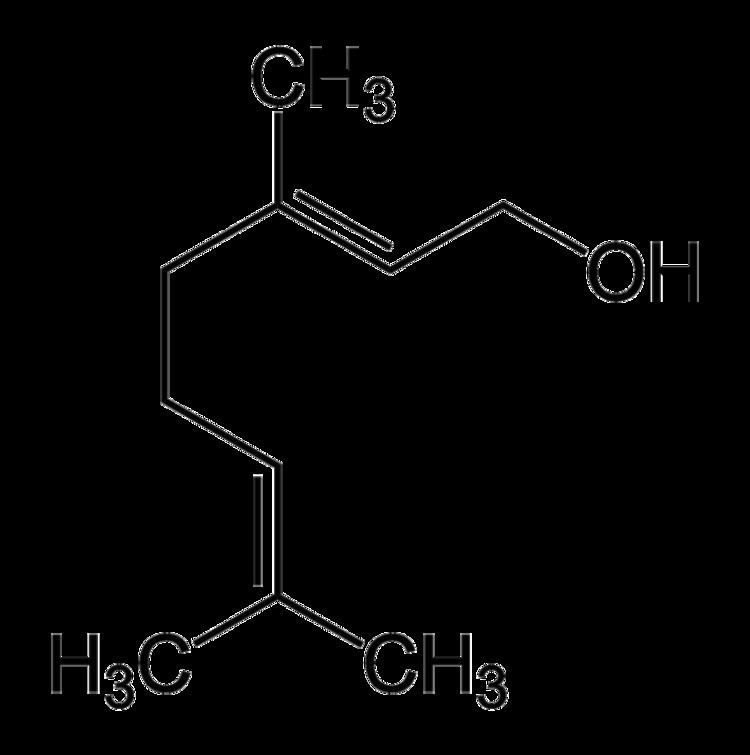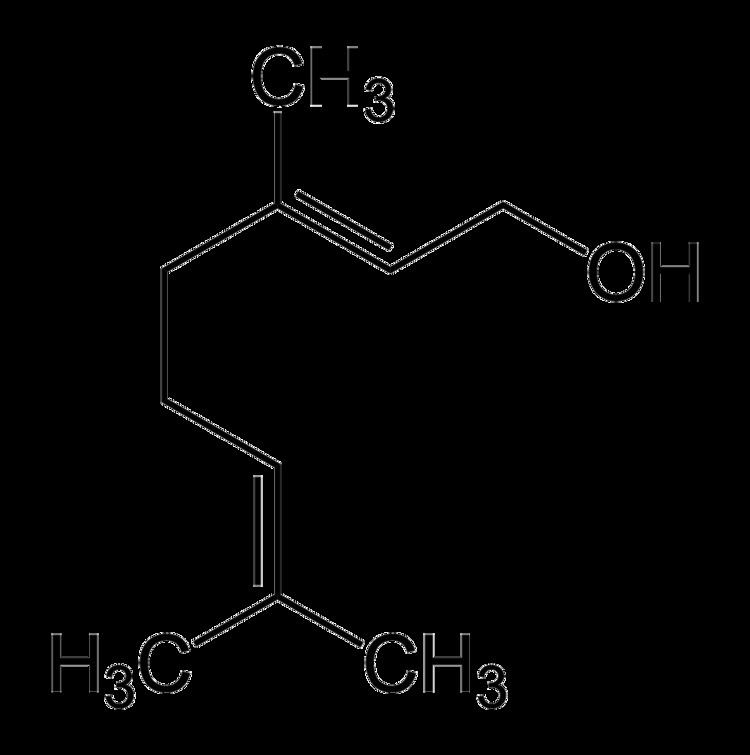Formula C10H18O | Density 889 kg/m³ | |
 | ||
Natural mosquito repellent geraniol
Geraniol is a monoterpenoid and an alcohol. It is the primary part of rose oil, palmarosa oil, and citronella oil (Java type). It also occurs in small quantities in geranium, lemon, and many other essential oils. It appears as a clear to pale-yellow oil that is insoluble in water, but soluble in most common organic solvents. It has a rose-like scent and is commonly used in perfumes. It is used in flavors such as peach, raspberry, grapefruit, red apple, plum, lime, orange, lemon, watermelon, pineapple, and blueberry.
Contents
- Natural mosquito repellent geraniol
- Use
- Biochemistry
- Reactions
- Health and safety
- Related compounds
- References

Use

Research has shown geraniol to be an effective plant-based mosquito repellent. On the other hand, it can attract bees as it is produced by the scent glands of honey bees to help them mark nectar-bearing flowers and locate the entrances to their hives.

Although geraniol and other flavor compounds are found naturally in well-aged tobacco, geraniol is listed in a 1994 report from cigarette companies as one of the 599 additives to cigarettes to improve their flavor.
Biochemistry

The functional group based on geraniol (in essence, geraniol lacking the terminal -OH) is called geranyl. It is important in biosynthesis of other terpenes. It is a by-product of the metabolism of sorbate and, thus, is a very unpleasant contaminant of wine if bacteria are allowed to grow in it.
Reactions
In acidic solutions, geraniol is converted to the cyclic terpene alpha-terpineol.
Health and safety

Geraniol is classified as D2B (Toxic materials causing other effects) using the Workplace Hazardous Materials Information System (WHMIS). Geraniol is considered a severe eye (and moderate skin) irritant.
